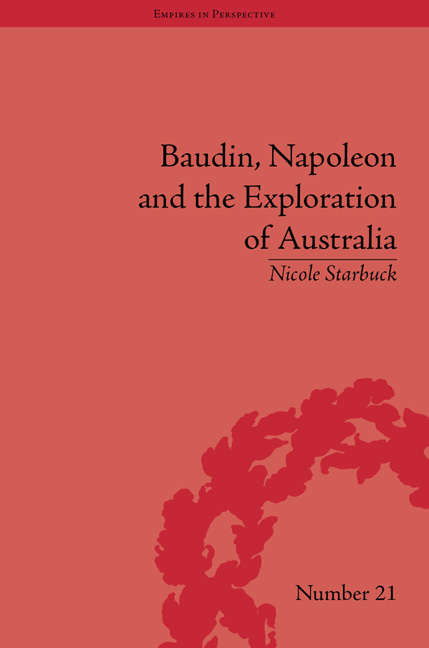Book contents
- Frontmatter
- CONTENTS
- Acknowledgements
- List of Figures
- Introduction: Voyaging out of the Enlightenment
- 1 Between Revolution and Empire: France and its Australian Voyage in 1800
- 2 ‘I Should Wish … to Establish a Few Tents on Shore’: The Port Jackson Stay
- 3 Disciplining Passions: French Naval-Voyagers at Anchor
- 4 The French and the British: A Diplomatic Relationship
- 5 Liberty, Equality and ‘Civilization’: Observations of Colonial Aborigines
- 6 Swans, Frogs and Rum: Natural History in an ‘Unnatural’ Space
- 7 Baudin's ‘New Expedition’
- 8 Epilogue: Voyaging into the Nineteenth Century
- Notes
- Works Cited
- Index
Introduction: Voyaging out of the Enlightenment
- Frontmatter
- CONTENTS
- Acknowledgements
- List of Figures
- Introduction: Voyaging out of the Enlightenment
- 1 Between Revolution and Empire: France and its Australian Voyage in 1800
- 2 ‘I Should Wish … to Establish a Few Tents on Shore’: The Port Jackson Stay
- 3 Disciplining Passions: French Naval-Voyagers at Anchor
- 4 The French and the British: A Diplomatic Relationship
- 5 Liberty, Equality and ‘Civilization’: Observations of Colonial Aborigines
- 6 Swans, Frogs and Rum: Natural History in an ‘Unnatural’ Space
- 7 Baudin's ‘New Expedition’
- 8 Epilogue: Voyaging into the Nineteenth Century
- Notes
- Works Cited
- Index
Summary
The ship, for the insider – in all its spaces, in all its relationships, in all its theatre – was always being remade, was always in process. Its story had not ended. The partial history men made of it was always creating something new.
G. DeningIt was early in the spring of 1800 that Nicolas Baudin, accompanied by a commission of the Institut National's most eminent savants, presented the First Consul with his proposal for a voyage to ‘interest the whole of Europe’. This was to be his most ambitious project yet: a round-the-world voyage of natural history and geographic research aimed at augmenting ‘the discoveries of the great navigators who for over 40 years had radically extended the domains of these two sciences’. In fact, with an itinerary featuring the coastlines of Africa, the Americas, Hawaii, Tonga and Australia, and comprising no less than three ships, it would have been an even greater enterprise than the 1785–8 expedition of François de Galoup de La Pérouse – that expedition designed to rival the Pacific discoveries of James Cook. This was a grand plan, and political instability a year earlier had at the last moment prevented it from being realized, but Baudin had perceived an opportunity in the change of government wrought by the coup of 18 brumaire. He hoped that, if he first guaranteed the support of the Institut, that body ‘would engage the government, friend of science’ and persuade ‘the consuls to accomplish what the others had neglected’. The proposal did immediately capture Bonaparte's interest: ‘the reception passed just as I had envisaged’, Baudin later noted in his journal, ‘the voyage was decided’. Indeed, it was determined that a maritime expedition would take place, but not in the form Baudin had proposed.
Following deliberation by the commission of the Institut, in collaboration with the Minister of Marine and the Colonies and with the formal approval of the First Consul, the voyage that was ultimately decided, the voyage that commenced from the docks at Le Havre, 18 October, little resembled that which had originally been proposed.
- Type
- Chapter
- Information
- Baudin, Napoleon and the Exploration of Australia , pp. 1 - 10Publisher: Pickering & ChattoFirst published in: 2014



